Everyone knows I like my history and the older it is the better. I spend much of my time visiting prehistoric and neolithic monuments. Everyone knows of Stonehenge but there are hundreds of other stonecircles across Britain as well as countless other monuments. In fact as I write, I am preparing to go to Avebury tomorrow and West Kennett too!
So it was nice to visit somewhere a bit further afield whilst on my recent 9 day tour of Scotland, namely to Clava Cairns which are just outside the Highlands capital of Inverness and just a few minutes walk from the famous Battle of Culloden.
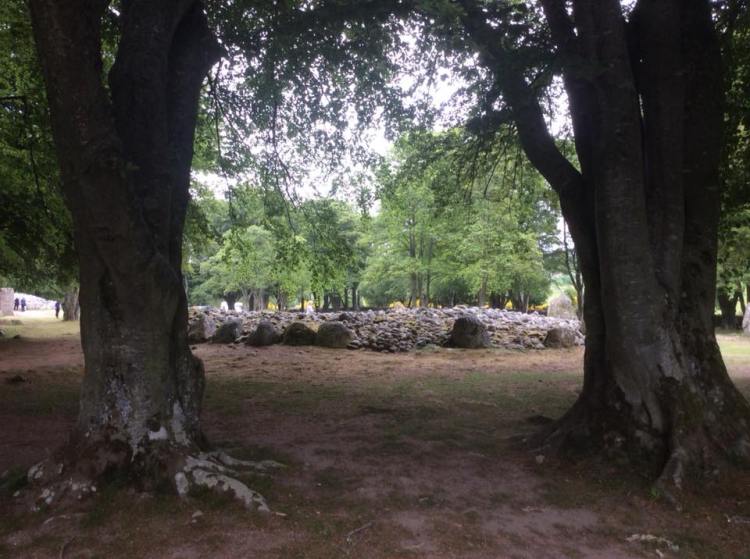
Set in a slightly wooded glade, the Clava Cairns comprise part of one, if not two, Bronze Age cemeteries. This landscape was an important place for ritual and burial activities in the Bronze Age. Later burials at the site suggest continued significance for over a millennia.
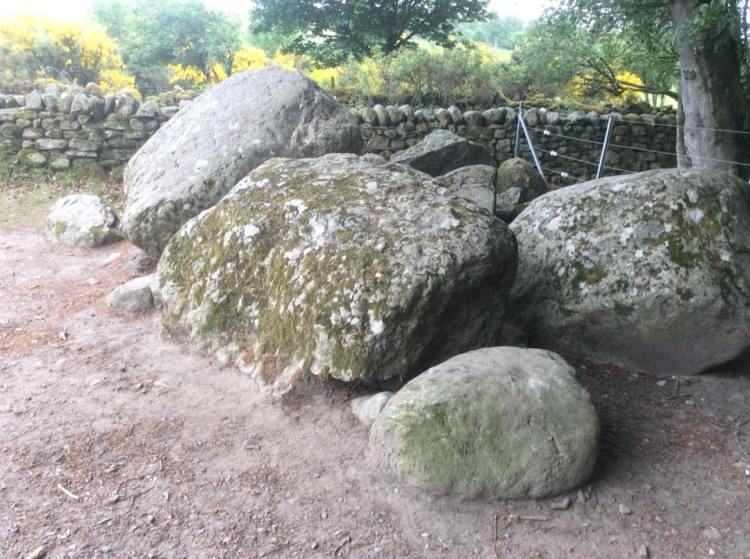
The three well-preserved cairns at Balnuaran each have a central chamber. But while the two outer cairns have entrance passages, the chamber of the central one is enclosed. Each cairn is surrounded by a ring of standing stones. Many of the stones used to construct the cairns have cup marks on them – these may have been reused from another place, perhaps an earlier sacred site.
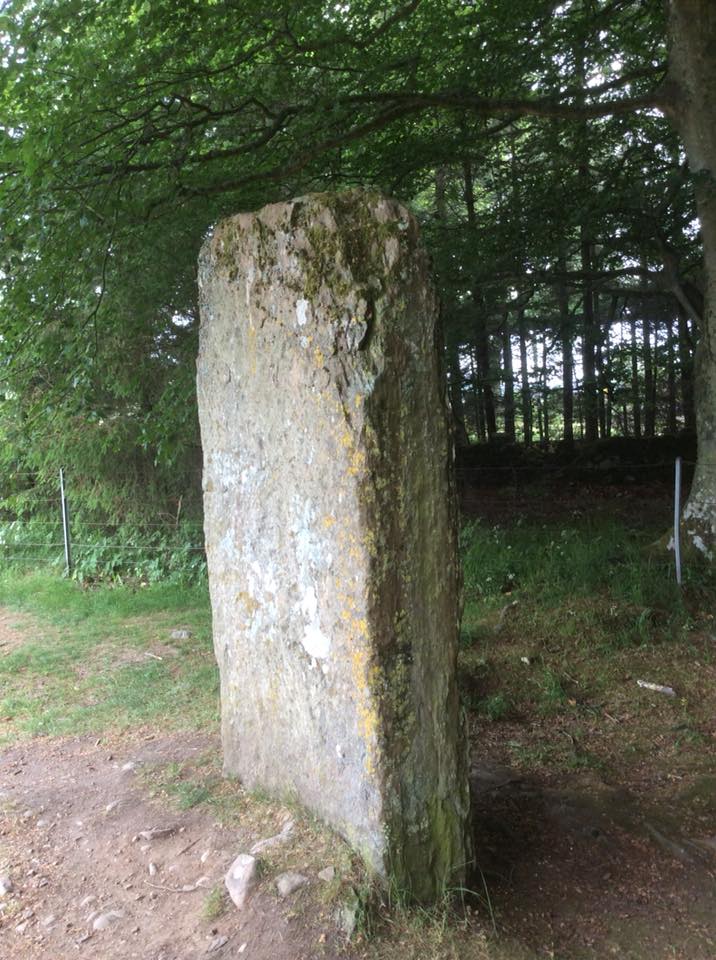
The Clava Cairns are a type-site for a group of around 50 similar cairns found only in the region of the Moray Firth and Inverness. The form of these burial monuments uniquely combines aspects of ring cairns, passage graves, and stone circles.
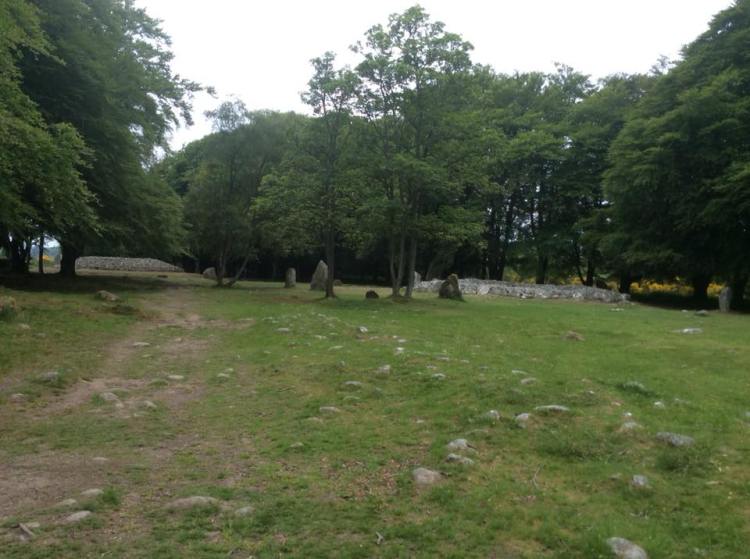
Like many other neolithic sites, the cemetery at Clava suggests that midwinter was an important time of year for the society who built them.
The three prominent cairns form a line running north-east to south-west. The passages of the two cairns are also aligned towards the south-west, suggesting that the builders had their eyes on the midwinter sunset. The standing stones also suggest a focus on the midwinter sunset – they are graded in height with the tallest facing the setting sun in the south-west.
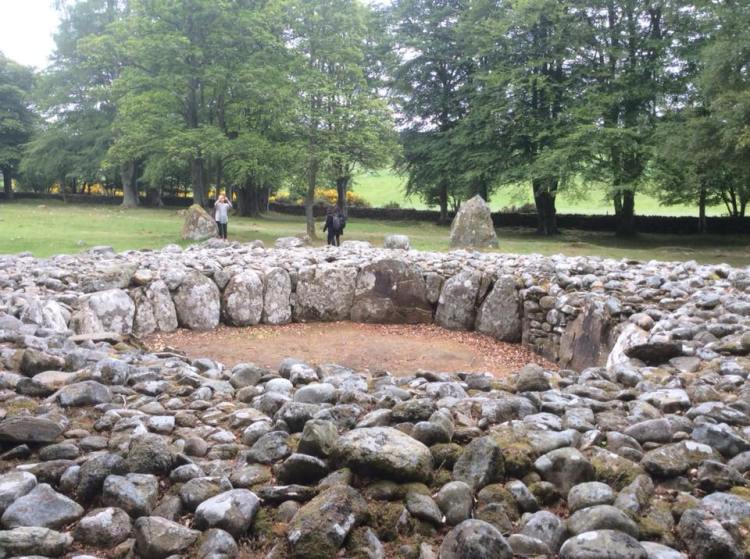
Considerable thought must have gone into the planning and construction of the graves. The midwinter solstice would have marked an important turning point in the year – many similar monuments across the British Isles have a similar alignment with movements of the midwinter sun. Such sites can tell us about beliefs of past societies and how they understood their world.
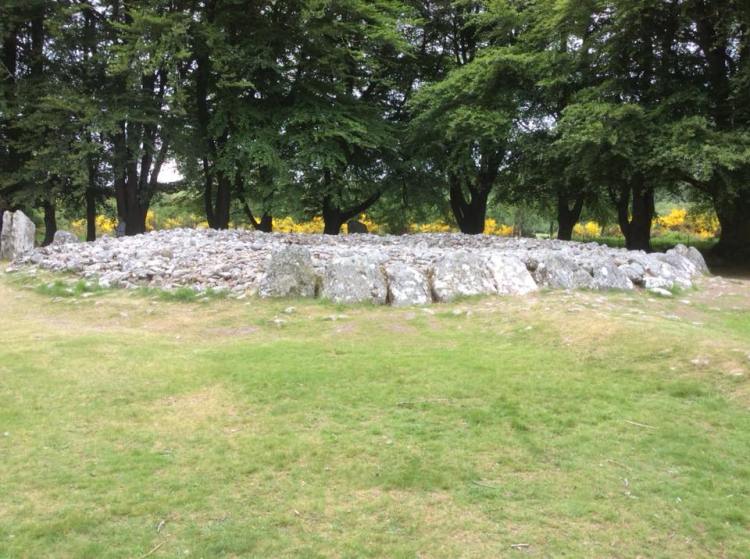
The cairns’ burial chambers were cleared out long ago, but it was the norm in similar monuments that only one or two people would have been buried in each cairn. It would have taken a large number of people to build the Clava Cairns, indicating that these were perhaps resting places for important individuals.
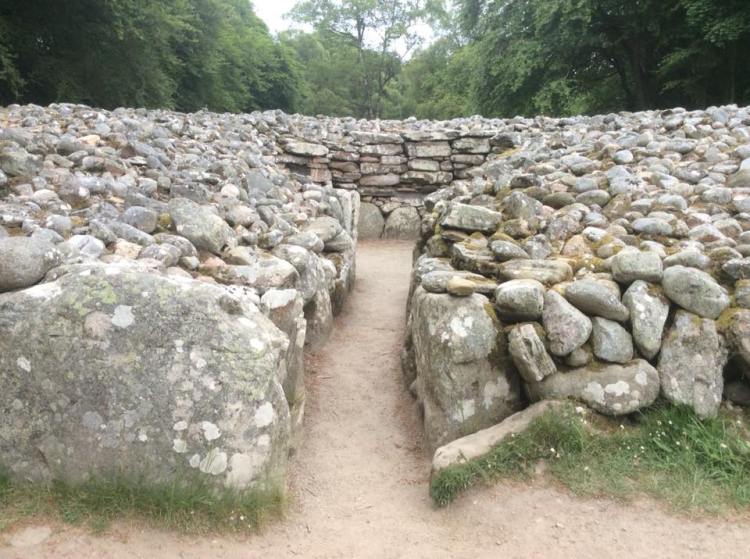
The row of three large cairns we see today was built about 4,000 years ago, around 2000 BC. There may once have been two more. A thousand years later, the cemetery was reused: new burials were placed in existing cairns, and three smaller monuments, including the kerb cairn, were built.
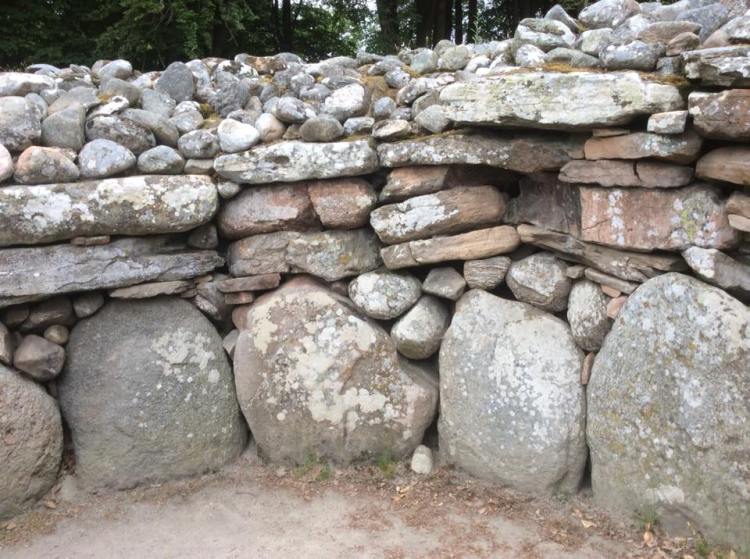
The remains of a chapel of an unknown date can also be traced on the ground nearby, at Milton of Clava though we only glimpsed it from our car.
Until a few years ago, this would have been just one of numerous little visited neolithic monuments but in recent years it has become the focus of attention for fans of Outlander due to it’s supposed inspiration as being the location for where Claire goes back in time.
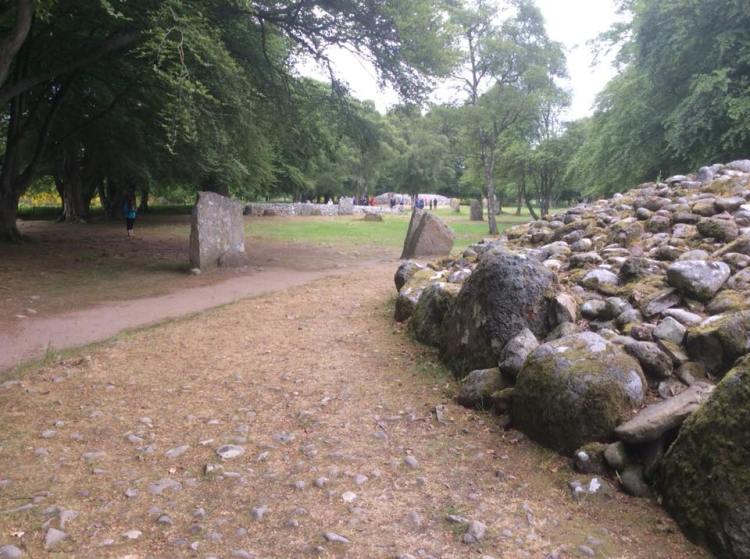
Seconds before we arrive a large coach group arrived but like mindless automantons, they all flocked to the same feature near the front entrace leaving the rest of the large site empty and peaceful until their speedy departure.
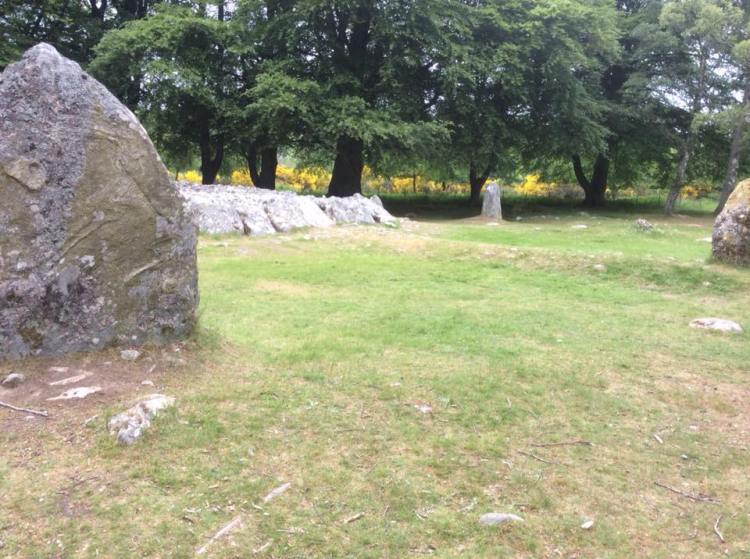
For my favourite stone circle then why not read my post on Castlerigg in the Lake District.
Most interesting. Visited Clava in 1982 (A.D.)
LikeLiked by 1 person
Apart from Outlander fans, I’m sure it hasn’t changed too dramatically.
LikeLike
What a great life you have, travelling round these places.
🙂
LikeLiked by 1 person
Yes, it can be a really neat job. Definitely the best I’ve ever had but it is also very tiring. I’ve only had one day off all year including weekends.
LikeLike
Been to all these sites. Wonderful experience.
LikeLiked by 1 person
It is a really fascinating place to spend an hour or two.
LikeLike
Fascinating! I have put it on my list of places to go,many thanks!
Have you seen all the amazing cairns and stone circles in Brittany? I think you would appreciate them too.
LikeLiked by 1 person
Yes, it is well worth the very long journey up there to see them. No, sadly I haven’t seen the ones in Brittany yet. The ones I most want to see next are The Callanish Stones in Lewis and Skarra Brae. Bizarrely there are places close to London in Oxfordshire and Kent that have prehistoric places and I haven’t got to them either.
LikeLiked by 1 person
So much to see, so little time!
LikeLiked by 2 people
I was just thinking that yesterday!!
LikeLike
Stunning. Fascinating. Thanks for these great pics!
LikeLiked by 1 person
I’m glad you enjoyed them! I’m good at making places look deserted!
LikeLike
I visited at dusk when all alone with this fantastic site. A truly empowering experience. https://graveyardsofscotland.com/2018/04/07/clava-cairns/
LikeLiked by 1 person
It’s a great place. I like your photos showing what it looks like when the trees are without their leaves.
LikeLiked by 1 person